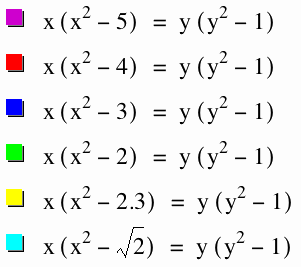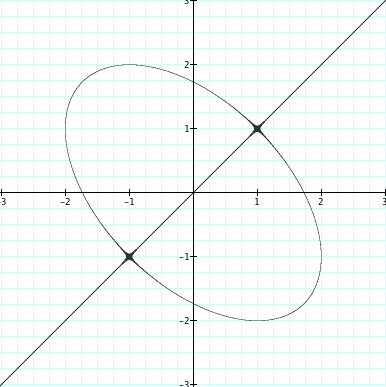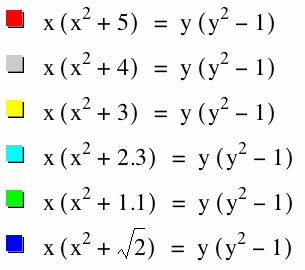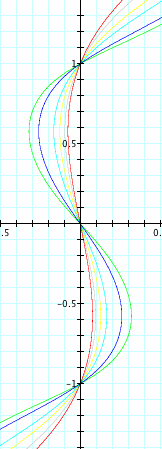
When A Circle Meets A Line
Investigating
![]()
By Ryan Shannon


Looking at![]() where {1<x<6}
where {1<x<6}
The further that n goes from zero we notice that the graph extends (potential place a video here) We talk about how the graph is showing a basic third degree polynomial where there are three roots. Letting x=0 will give us the roots to y, and noticing that the right side is the same we will always have the roots for y=(-1,0,1). This is why the graph will only pass the points {1,0,-1} Also that the x-intercept by letting y=0 we get  which is displayed above.
which is displayed above.
Also from the graph we see a relative shape to a cubic, which is increase, decrease, increase. Noticing that the graph is reflected over the y=x, and too y=x seems to be an asymptote.
Looking at ![]()
When we decided to place the same value in for the difference of x and y. We are graphing a circle and a straight line, in one phrase. This is actually because the phrase is two graphs. An ellipses and a straight line. thus showing us our asymptote from above.
With the use of some algebraic work we can conclude that ![]() is actually
is actually ![]()
from this equation we can see that it there are really two graphs molded together, to create this oval and line picture shown below. Then we have

Looking at![]() where {-6<x<-1}
where {-6<x<-1}

When we change the graph to have a sum on the left and a difference on the right, However when placing the same value for the difference from y and sum from x, we maintain the same graph shape. I see that the graph is passed at {1,0,-1} again. The graph looks to have been a reflection about the origin.
Noticing that the graph is no longer a function, and seeing that the graph only passes (0,0) for and x-value, makes me believe there are no real roots.